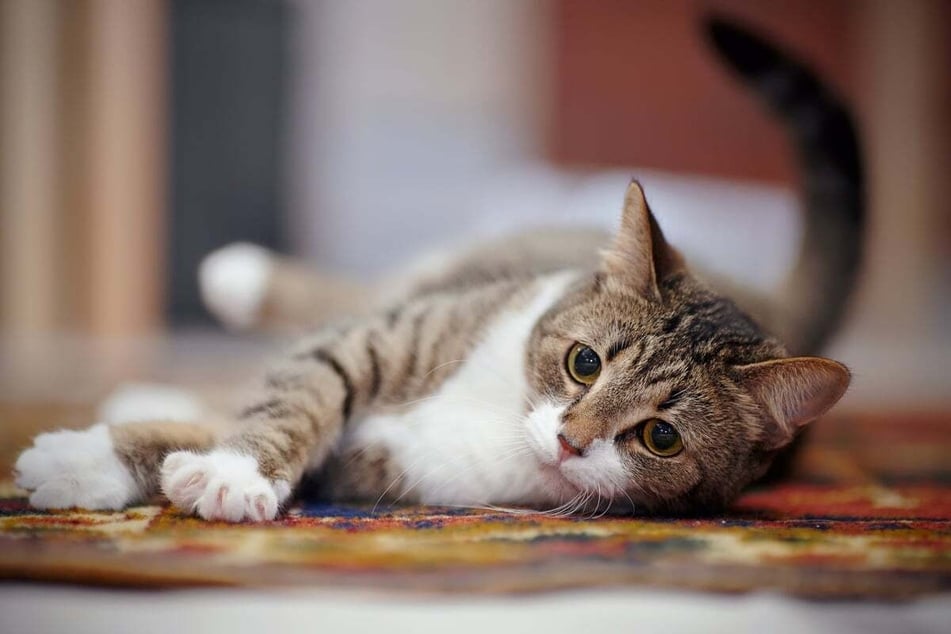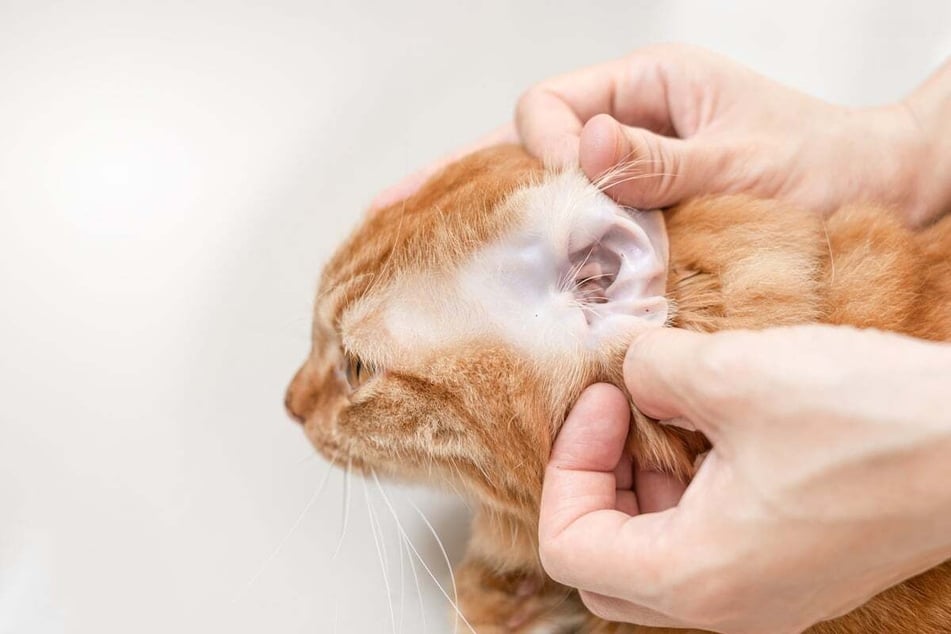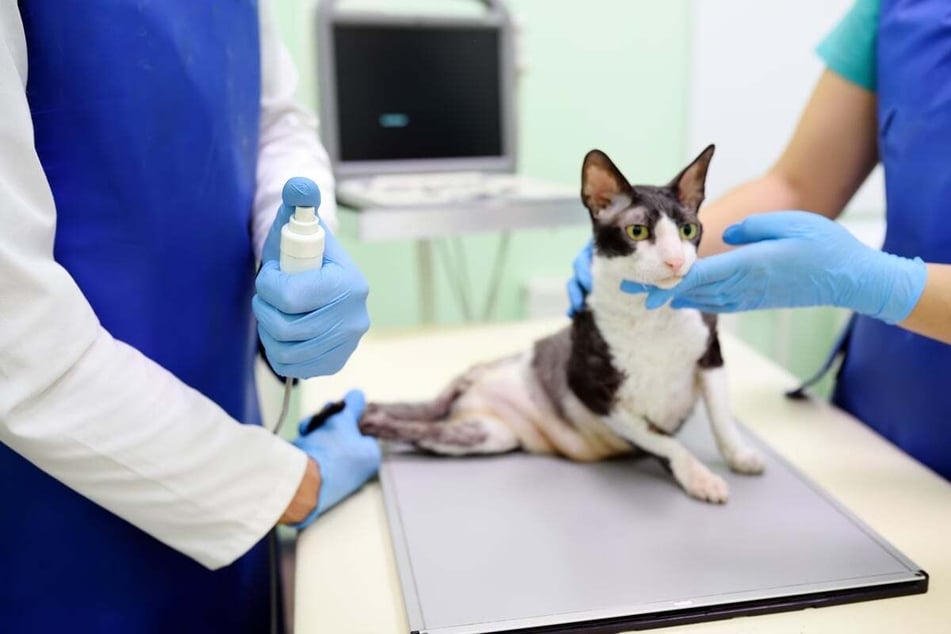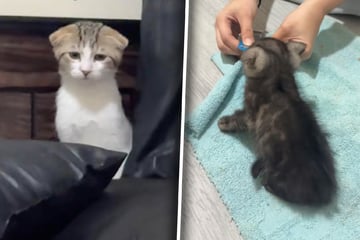Ataxia in cats: Explaining the medical condition, its causes, and treatment options
Some cats wobble, fall over constantly, and generally have no control over their movements. These cats live with the coordination disorder ataxia. You can find out what ataxia means for cats in this cat guide.

Cats with ataxia are usually unable to walk in a straight line, stumble, turn in circles, wobble uncoordinatedly, or simply fall over.
Due to their uncontrolled movements, these cats are also known as "wobbly cats."
Ataxia is a coordination disorder that can be triggered in cats by various causes.
The coordination and mobility of the furry friends are restricted, but this varies depending on the level of severity.
Targeted movements are particularly difficult for cats with ataxia.
TAG24 explains what ataxia is and how the disorder affects a cat's life.
What is ataxia?
Ataxia refers to various coordination disorders involving movement sequences. When performing movements, the muscle groups do not work together properly because the brain cannot control them.
Ataxia is not a disease in its own right, but a neurological symptom that is triggered by illness or injury.
Causes of ataxia in cats
Ataxia is caused by disorders in the motor system of the brain, in the peripheral nervous system, or in the spinal cord.
There are three types of ataxia, which are differentiated according to their cause.

Vestibular ataxia - balance disorder of the inner ear
The most common type of neurological disorder is vestibular ataxia, which is caused by a balance disorder of the inner ear triggered by inflammation of the middle or inner ear and the associated damage to the vestibular system.
If a cat suffers from vestibular ataxia, it can no longer perceive and move its body properly.
The affected cats are often weak, tired, and disoriented. Other symptoms of vestibular ataxia include nausea, vomiting, eye tremors, and a tilted head.
Cerebellar ataxia - underdevelopment of the cerebellum
Cerebellar ataxia is often caused by an infection in the womb, which results in underdevelopment of the cerebellum. Other triggers for cerebellar ataxia are tumors, poisoning, or the loss of brain mass (brain atrophy).
If the cerebellum is not properly developed, the cat has no control over balance and coordination.
The good thing about cerebellar ataxia is that the disorder does not worsen, and the movement disorders can be counteracted with exercises and physical therapy.
Cats with cerebellar ataxia always keep their legs apart, shake their eyes and head, walk erratically, and often stumble.
The affected felines find it difficult to judge how far away something is, how fast it is moving, and how strong the movement is.
Spinal ataxia - damage to the spinal cord
Spinal, sensory, or proprioceptive ataxia is the result of an injury, contusion, or damage to the spinal cord or peripheral nerves.
In spinal ataxia, the cat's brain no longer recognizes where its extremities are, which means it can no longer coordinate movements correctly.
Cats affected by spinal ataxia often have a wide gait, stagger, fall over, or bump into objects. Toe kinking and crossing over are also frequently observed.
Other causes of ataxia in cats
Ataxia in cats can be caused by other diseases, infections, and defects.
Possible causes of ataxia in cats:
- Abscess
- Congenital defect
- Autoimmune disease
- Bacterial infection/inflammation (e.g. toxoplasmosis, feline leukemia)
- Degenerative diseases (e.g. muscle atrophy, degenerative myelopathy)
- Circulatory disorder
- Bone and joint disease
- Nutrient deficiency
- Parasite infestation
A veterinary examination is essential in order to find the cause and determine the appropriate treatment and therapy.
Recognizing ataxia
If a cat walks strangely, this does not necessarily mean that it is suffering from ataxia, but it is always advisable to find the reason for the kitty's movement difficulties.
Signs of ataxia in cats:
- Unsteady gait
- Unstable stance
- Limbs buckling
- Splayed legs
- Uncontrolled movements
- Trembling
- Restlessness
- Tipping over
- Disorientation (turning in circles)
- Tilting of the head
- Wobbling head
- Eye trembling
- Squinting
If you suspect that your cat is unwell, you should have it checked by a vet as soon as possible.
Taking care of an ataxic cat
Keeping a cat with ataxia is even more challenging than keeping a cat with no restrictions, but many of the affected animals can lead a good life despite ataxia if they are given the appropriate support.
Treating an ataxic cat
To treat ataxia, the cat will first undergo a comprehensive examination, including blood tests, X-rays, ultrasound, CT, MRI, cerebrospinal fluid tests, ear checks, and urinal examinations.
When ataxia is diagnosed and the cause is found, treatment can begin.
If an illness such as an ear infection is the cause of the disorder, this will be treated first. Physical therapy and movement exercises can help with the ataxia itself.
Sometimes, temporary treatment of the ataxia with medication is sufficient. However, long-term therapy is often necessary in the case of metabolic problems or autoimmune diseases.
Damage to the spine or tumors often requires surgery, followed by further therapy.
How well ataxia can be treated depends on the type and individual conditions of the cat.

Supporting a cat with ataxia
If you have a cat with ataxia, you should take plenty of time for it, arrange the home accordingly, and – above all – be patient.
Home
When furnishing your home, bear in mind that the cat cannot move around properly, but needs to be able to reach everything it needs easily. Cats with ataxia cope better on carpets than on smooth floors. It is important to avoid the risk of falls and accidents. Cat stairs, jump aids, and cushions are helpful. Instead of high, narrow scratching posts, low, stable, and large viewing areas and scratching mats are best.
Exercise
It is important for ataxic cats to keep moving. As cats tend to avoid movement, they should be challenged with running training, games of skill, and physical therapy exercises.
Nutrition
A balanced and nutritious diet can have a positive effect on a cat's disorder. It is best to consult a vet for advice on the right diet.
Attention
A cat with ataxia needs at least as much, if not more, petting and playing time as other cats.
In a loving and accommodating home, an ataxic cat can lead a completely normal life within the limits of its capabilities.
Euthanize a cat with ataxia?
When you see a cat with ataxia, you might ask yourself whether the cat's life is worth living at all or whether it should be put down.
As the neurological disorder is not a disease in itself, but only a symptom, this question depends entirely on the cause of the cat's ataxia.
If the condition cannot be treated and the cat's quality of life is permanently severely impaired (e.g. due to constant pain, inability to move, or similar), then you should seek advice from your trusted vet on a possible solution for your cat.
FAQ: Things to know about ataxia in cats
Conclusion
Ataxia is a movement disorder that can be caused by various diseases in cats.
Even if the affected cats lead a restricted life, it is often no problem for the adaptable animals to cope with the disorder, provided they find a loving and supportive home.
Cover photo: 123RF/azalia
